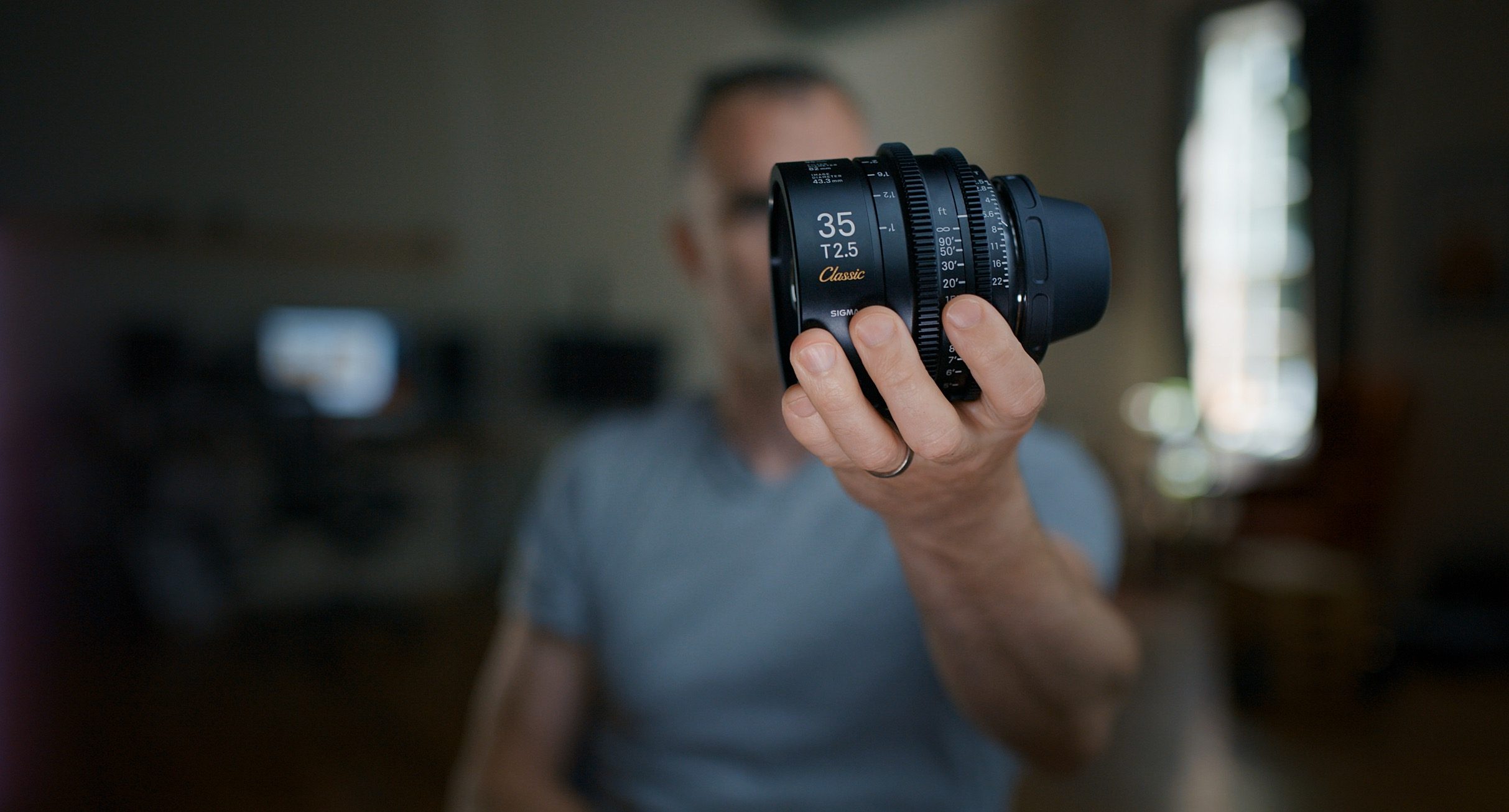For those of us making films before the digital camera revolution, cinema could sometimes be a messy business. At each step along the way, things could go wrong. In the worst case scenario, you lost your footage and had to shoot again. Although, sometimes some small error would introduce an imperfection into the footage that made it unique and somehow, alive. We find ourselves searching for ways to combine the old-school style with modern technology. With that, the SIGMA Cine Classic lenses have heard the call.
The Obstacles with Film
I don’t miss the celluloid days of film. I know big Hollywood movies still shoot film, but for independent filmmakers, the film process is prohibitively expensive, and has kept many stories from being told. One way filmmakers have been trying to recapture the old life and magic of film is by using vintage lenses, such as the Canon K35s. These lenses from the 70s have a pronounced flare and lower contrast compared to modern lenses, and were used on classics such as Alien as well as modern films such as American Hustle.
Apart from the extravagant cost, using 50 year old lenses creates a variety of issues. Such as, different qualities between lenses of the same set, decreased quality and often unreliable focus.
Enter the SIGMA Classic Primes. SIGMA took the same housing and elements as their excellent Cine primes and used different coatings (and sometimes uncoated elements) to produce a wonderful classic look, with low contrast, milky darks, ghosted highlights and pronounced flares.
SIGMA Cine Classic vs Original Cine
Like the the SIGMA Cine Primes before them, the lenses have a beautiful smooth bokeh from a 9-blade iris. As well as a universal 95mm front diameter for easy lens changes with a matte box or filter.
The lack of coatings on interior elements allow light to bounce within the lens, sending multiple flare iterations. This turns any bright source into a veritable firework. In my tests I noticed that the closer the light source to the lens, rather than its brightness, created the most flares.
Compared to the Cine Primes, the Classic Primes have two T stops less due to the refraction within the lens. T/2.5 (except the 14mm and 135mm at T/3.5). This is due to the bounce of the light off the interior elements. Even so, wide open, the lenses still have plenty of bokeh.
The lenses bring a unique character to the images they produce. Distinct from the sometimes unrelenting sharpness and fidelity of modern glass. Shooting with them captures the wonderful capriciousness and whimsy of celluloid, without the downside of cost or unreliability.
I’m personally glad that SIGMA didn’t decide to add a lower amount of flare and halation, splitting the difference between vintage glass and modern lenses. I admire their commitment to “go all in” and produce a set of lenses that has a strong unmistakable look.
Who are the SIGMA classics for? They’re best suited for projects that seek to create a world distinctive from our regular reality, be that a world of the past, distant future or those with a fantasy element. While still color accurate, the Classics are serve the function of rose-colored glasses that give the images they capture an other worldly, enhanced look.
Flare and Halation
The flare and halation in the lens bring added emphasis to light in the frame. SIGMA classics will have the most value in any scene or shot it with contrasting, chiaroscuro lighting, where bright and dark areas contact sharply for emphasis. This is because the lens adds character to bright highlights by flaring them, and these flare effects can best be scene in a darker ground.
Dark, moody scenes are also enhanced by this kind of lens because the milky tone the lenses add to dark areas, adding more shades of grey and life to dark areas.
If you’re looking for a super clean, pristine image, that pops with clarity and sharpness the SIGMA Cine Primes might be a better way to go. Also super low light shoots, like those at night with available light, are better suited to the latest coatings and faster T stops of more modern looking lenses.
There’s no reason why you couldn’t mix both lenses on a production for effect, with the SIGMA Cine lenses for the modern day story and Classics for a character’s childhood, or the same event from a more subjecting point of view. It’s these kind of subtle details that create subtext in filmmaking, and add to the power of the story.
The image feels so alive and unique, introducing a much needed burst of unpredictability and humanity back into the filmmakers palate. All while still maintaining modern reliability and consistency across the lens range.
The SIGMA Cine Classic primes are both a look back and a step forward in filmmaking technology.
Read more:





